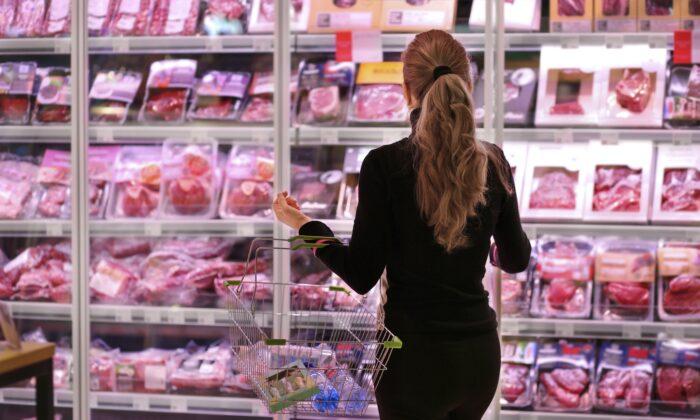Are you an avid reader of food labels? If so, you probably know there are scores of words and phrases that describe the foods you can buy at the grocery stores and farmers markets.
We’re not here to talk about the regular vernacular—the nutrients, additives, or claims like “low fat,” “high fiber,” or “good source of protein.” Instead, we are going to explore the ambiguous, mysterious, and often confusing terms used to describe the (often) fresh, unprocessed foods in our midst.
Let’s Talk About Protein Foods
When you’re shopping for meat, dairy products, fish, and poultry, labels can reveal the environment in which the animals were raised or produced and what they were fed. Since the food and activity of food animals can have an impact on their nutritional content and density, these factors in turn can have an impact on the people who eat these foods. That is, you are not only what you eat, but you are what the animals eat as well.Here are some terms you may see regarding animal protein foods.
Farmed: This term is used to describe fish that are commercially bred and raised in an enclosed pen, tank, or other space. Also known as aquaculture, farmed fish may be less nutritious (i.e., contain less amounts of omega-3 fatty acids) than wild-caught fish because of their diet. Farmed fish are often fed corn and soy, and vegetable oils containing little to no omega-3s. Intake of omega-3s has been shown to help support brain and cardiovascular health.
However, as noted in one study that examined omega-3 content in both farmed and wild-caught fish, fatty acid levels in farmed fish can vary widely and even exceed those found in wild-caught fish, depending on what the aquaculturists feed their fish. Also, since farmed fish are raised in unnatural conditions, there’s the risk of disease and parasites that can spread outside of the farmed environment to wild fish.
Wild/Wild-Caught: This refers to fish that are caught in their natural environment, such as oceans, rivers, and lakes. Colorado State University notes that wild-caught fish, which eat a natural diet, tend to have lower levels of saturated fat than farm-raised fish, which means a higher protein content. Wild-caught fish also tend to have less disease and lower levels of contaminants.
Free-Range: According to the U.S. Department of Agriculture (USDA), “free-range” can be used to describe any poultry (including eggs) and meat products. The animals classified as such must have continuous, free access to an outdoor environment for more than 51 percent of their lives throughout their normal growing cycle. Another term used to describe this method is “pasture-raised.”
Because these animals can get more exercise than those in feedlots or cages, they tend to be leaner and thus provide more protein and less saturated fat. Less saturated fat in the diet can mean lower levels of bad (low-density lipoprotein, or LDL) cholesterol, which is a risk factor for cardiovascular disease. In a study comparing free-range with conventionally raised chickens, for example, the authors found that free-range chickens had higher amounts of protein in breast meat and lower fat concentrations than their conventionally raised counterparts.
Organic: When referring to meat, poultry, and dairy foods, the USDA notes that organic “means that the animals from which [they] originated were raised in living conditions that accommodated their natural behaviors,” that no antibiotics or hormones were given (except antibiotics, if necessary, to treat illness), that the animals grazed in healthy pastures and were fed 100 percent organic feed and forage, and that during the inspection there wasn’t any contact with artificial flavors, colors, or preservatives before packaging.
Grass-Fed/Grass Finished: According to the USDA, grass-fed animals must consume grass and forage (which can include cereal grain crops in the pre-grain state) exclusively after they are weaned. Grass-finished refers to cattle who eat grass for their entire lives without supplemental food. Research shows that grass-fed cattle have higher levels of phytonutrients as well as vitamins A and E than do grain-fed cattle.
Let’s Talk About Plant Foods
To reap the most nutritional and health benefits from your plant foods, be sure to choose those that are raised and marketed using the most beneficial methods. Three categories include hydroponics, organic, and biodynamic.Hydroponics: This is a method in which plants are grown without soil. Plants produced in this way use less water than those grown in soil, plus they grow faster, have higher yields than soil-based approaches, can be grown year-round, and can grow both indoors and outdoors. One health benefit of hydroponic produce is that, unlike most conventionally grown fruits and vegetables (which must be picked before they are naturally ripened if they are to be shipped and stored and perhaps treated with ethylene gas), these crops can be picked when ripe. Naturally ripened foods usually contain more nutrients.
Organic: According to the USDA, produce can be called organic if it is certified to have been grown in soil void of prohibited substances (e.g., pesticides and most synthetic fertilizers) for three years before harvest, and none can be grown or handled with genetically modified organisms, or GMOs. In multi-ingredient foods, the products cannot contain artificial flavors, colors, or preservatives, and ingredients must be organic (with a few minor exceptions).
When it comes to nutrition, organic plants provide several health benefits. They tend to have higher levels or concentrations of some nutrients, including antioxidants. Lower levels of the toxic metal cadmium have been found in organic grains, and you can expect significantly lower levels of pesticide residue.
[Editor’s note: If you visit a local farmers market, talk to the farmers about their growing practices. Even if they aren’t certified organic, they might employ organic practices in their farming.]
Biodynamic: Biodynamic farming utilizes an organic approach but also emphasizes the interrelationship between the soil, plants, and animals in a holistic manner. The goal of biodynamic farming is to restore, enhance, and maintain the soil and ecology, including wildlife and plant biodiversity. Those who enjoy plants grown in a biodynamic environment may also reap the health benefits of organic products rich in nutrients.





